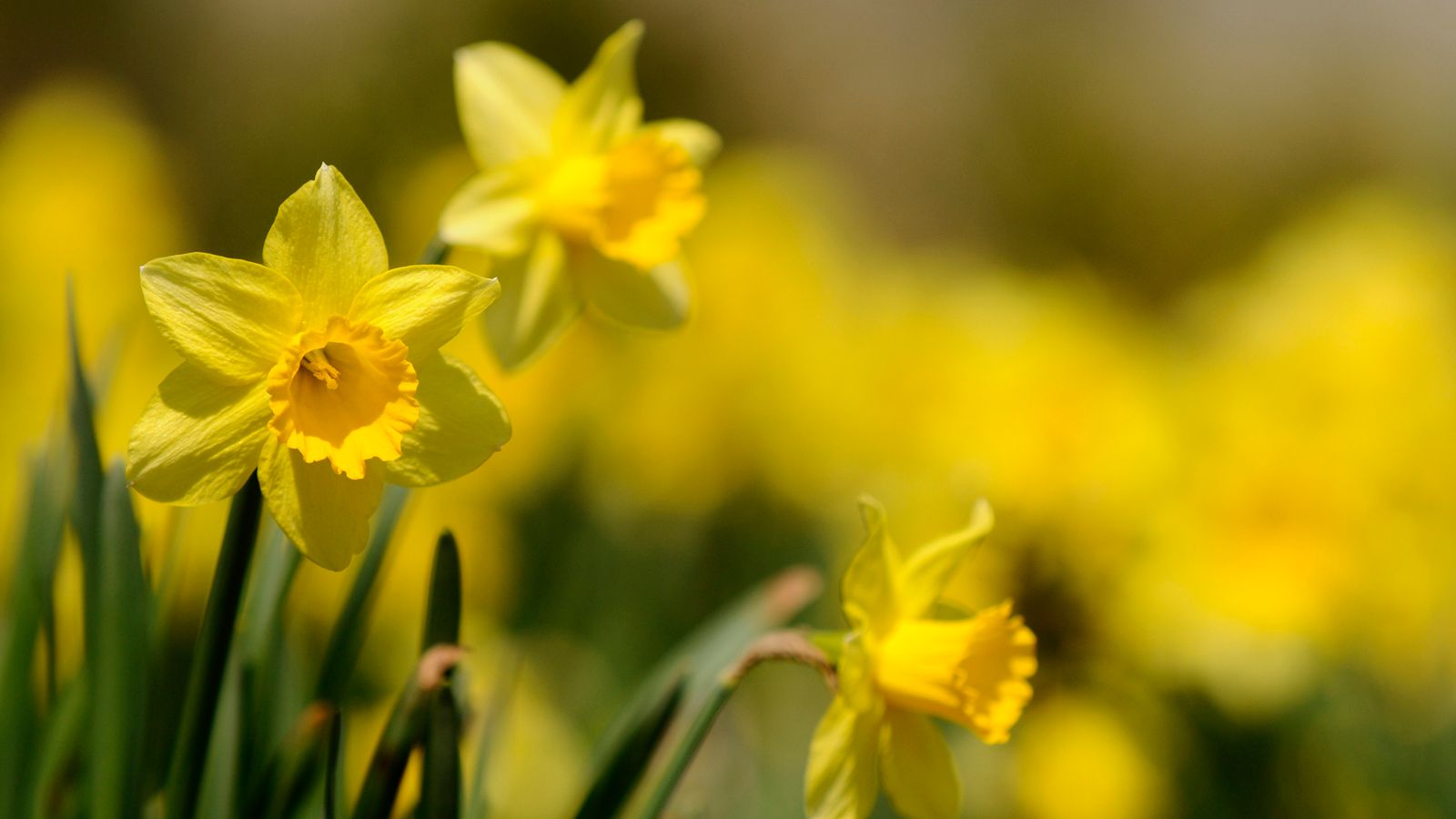U.K News
Daffodil hunt launched by Royal Horticultural Society as flower lovers urged to look out for rare varieties

A National Appeal to Flower Lovers: Help Map Daffodils Across the UK
Spring is just around the corner, and with it comes the vibrant burst of color that daffodils bring to gardens, parks, and roadsides across the UK. To celebrate 100 years since the Royal Horticultural Society (RHS) played a pivotal role in saving the daffodil, the charity is launching an exciting new project called "Daffodil Diaries." This initiative is calling on flower lovers, gardeners, and businesses to help map the locations of daffodils blooming across the country. The project is particularly focused on identifying rare varieties that are at risk or even thought to be extinct, such as the pink, white, and "bonfire" yellow daffodils.
The "Daffodil Diaries" project runs from February 12 to Saint David’s Day on March 1, a period when daffodils are in full bloom and Wales celebrates its patron saint with the flower. By logging the locations, colors, types, and heights of daffodils, participants will contribute valuable data to RHS scientists. This information will help researchers understand the environmental factors influencing the spread of daffodils, their adaptability, and even what traits flower buyers prefer. The project is also a unique opportunity for the public to connect with nature and play a role in preserving Britain’s horticultural heritage.
The Historical Significance of Daffodils and the RHS’ Role in Their Survival
Daffodils have long been a symbol of spring and renewal, but their history in the UK is deeply intertwined with the efforts of the RHS. In the early 20th century, the daffodil faced a significant threat from eelworms, a type of parasitic nematode that devastated the plant. In 1924, a scientist at the RHS, James Kirkham Ramsbottom, developed a groundbreaking hot water treatment that effectively eradicated the eelworms. His innovative solution was instrumental in saving the daffodil from decline and earned him the prestigious Barr Memorial Award.
Today, the RHS continues its commitment to protecting and celebrating daffodils. With over 31,000 known varieties, ranging from the classic yellow to rarer shades of pink and white, the daffodil is one of the most diverse and beloved spring flowers. However, many of these varieties are at risk of disappearing, making the "Daffodil Diaries" project more crucial than ever. By engaging the public in this effort, the RHS aims to not only preserve the genetic diversity of daffodils but also ensure their survival for future generations.
The Rare Varieties: A Hunt for the Elusive Daffodils
Among the thousands of daffodil varieties, three are of particular interest to the RHS and its partners: the Mrs R O Backhouse, the Mrs William Copeland, and the Sussex Bonfire. These rare daffodils are either at risk or have been lost to cultivation, making them the focus of the mapping project.
-
Mrs R O Backhouse is one of the first pink daffodils ever recorded. It features a striking coral pink trumpet surrounded by ivory flowers. Despite its historical significance, this variety has become exceedingly rare, and sightings are few and far between.
-
Mrs William Copeland is a white double-flowered daffodil that has not been available for sale in recent years. Its delicate appearance and unique color make it a prized find for daffodil enthusiasts.
- The Sussex Bonfire is a double-flowered daffodil with a vibrant yellow and orange hue. Remarkably, this variety has never been located, and its existence remains a mystery. Finding it would be a groundbreaking discovery for horticulturalists.
By encouraging people to look for these rare varieties, the RHS hopes to uncover their whereabouts, protect them, and ensure their survival. These daffodils are not just beautiful flowers; they are also living pieces of gardening history, holding valuable genetic material that could be used in future breeding programs.
Expert Insights: Why Daffodils Matter
Dr. Kalman Konyves, a daffodil expert at the RHS, emphasizes the importance of these flowers beyond their aesthetic appeal. "Daffodils have come to mark the arrival of spring and are celebrated for their welcome burst of colour in gardens, parks, and roadsides," he says. "But there’s more to this ubiquitous yellow flower than meets the eye, with 31,000 known varieties available in green, pink, and red. Understanding where they can be found will help us in preserving this diversity for the future."
Gwen Hines, chief executive of the plant conservation charity Plant Heritage, echoes this sentiment. "Springtime daffodils are abundant, but rare varieties could be lost from our gardens and roadsides if they’re not found and cared for," she warns. While six national plant collections do protect some of these rare varieties, many others remain unprotected. This is why the RHS and Plant Heritage are urging everyone to join the search for these elusive flowers this spring.
How You Can Participate in the Daffodil Diaries Project
Participating in the "Daffodil Diaries" project is straightforward and accessible to everyone, whether you’re a seasoned gardener or simply someone who enjoys spotting flowers during a walk. Here’s how you can contribute:
-
Record Your Sightings: Start by logging the locations of daffodils you spot. Note their color, type, and height. Even photos can be helpful!
- Look for Rare Varieties: Keep an eye out for the three rare daffodils mentioned above—Mrs R O Backhouse


















